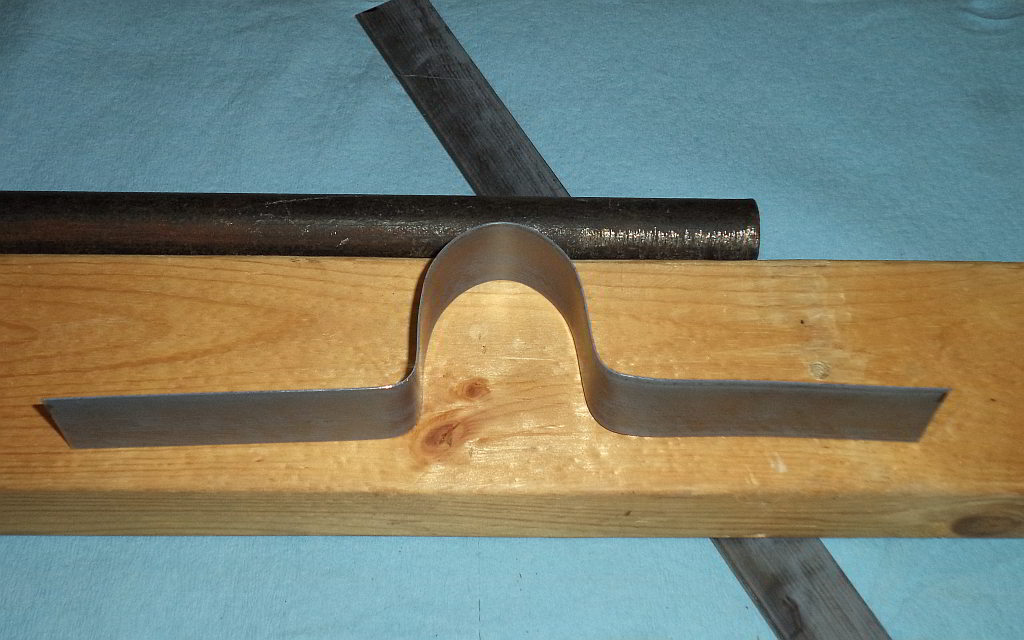To form this strap into the shape below, I did the following:
- Fastened a 1" pipe to the workbench using screws (I do not have a vise, so this was my best option).
- Originally, I was using a 2" diameter pipe because I wanted a 2" diameter curve. A 1.5" pipe would have probably gotten me closer, but the 1" pipe produced a curve with an approximate 13/16 radius (or 1 5/8" diameter).
- Wearing sturdy gloves - I slowly bent the metal over the pipe. I bent the middle fistfirst then working side to side, towards the ends, an inch or less on each side of the center.
- This steel is very resilient, so I would occasionally twist the metal around the pipe (think of a lower case cursive 'i') to smooth out the bends made over the pipe as I went.
- After forming the desired curve, I bent the sides out to form tabs using the 2x4 in the picture.
- (Not shown) Using aviation snips, I trimmed the excess from each end (intentional waste to facilitate working the metal) and drilled holes for mounting screws.

